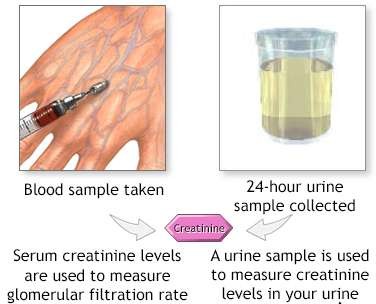A nurse is developing a plan of care for a client who is to begin receiving peritoneal dialysis. Which of the following interventions should the nurse implement to ensure proper dialysate exchange?
Maintain the client in a left lateral position during dialysis.
Monitor vital signs every 2 hours during the procedure.
Warm the dialysate solution prior to instillation.
Place the drainage bag above the level of the client's abdomen.
The Correct Answer is C
Choice A reason: Maintaining the client in a left lateral position is not specifically required for peritoneal dialysis. Positioning may vary based on the individual's comfort and specific medical needs.
Choice B reason: While monitoring vital signs is important during any medical procedure, it is not an intervention that directly ensures proper dialysate exchange in peritoneal dialysis.
Choice C reason: Warming the dialysate solution prior to instillation is a standard practice in peritoneal dialysis. It helps to promote patient comfort and more efficient exchange of wastes and fluids.
Choice D reason: Placing the drainage bag above the level of the client's abdomen would impede gravity drainage, which is necessary for proper dialysate exchange. The drainage bag should be placed below the level of the client's abdomen.
.
Nursing Test Bank
Naxlex Comprehensive Predictor Exams
Related Questions
Correct Answer is A
Explanation
Choice A reason: The serum creatinine test measures the amount of creatinine in the blood and provides information about kidney function. Normal ranges for serum creatinine levels are 0.74 to 1.35 mg/dL for adult men and 0.59 to
1.04 mg/dL for adult women. This test is a common way to assess renal function and can indicate if the kidneys are not filtering waste effectively.
Choice B reason: While a serum creatinine test can indicate severe renal impairment, it does not diagnose a specific disease. Further testing would be required to determine the presence of a particular renal disease.
Choice C reason: The serum creatinine test does not directly show if medications are affecting kidney function. However, if a patient is on medications known to affect the kidneys, such as certain steroids, changes in creatinine levels can suggest an impact on renal function.
Choice D reason: It is part of the nurse's role to provide information about tests and procedures. Telling a patient to ask the doctor does not offer immediate support or information, which can be important for patient care and understanding.

Correct Answer is ["2"]
Explanation
Step 1: The total amount of diphenhydramine required per dose is 50 mg.
Step 2: Each tablet contains 25 mg of diphenhydramine.
Step 3: To find out how many tablets are needed, we divide the total amount required by the amount in each tablet. So, 50 mg ÷ 25 mg/tablet.
Step 4: The result is 2 tablets.
So, the nurse should administer 2 tablets per dose. This is already a whole number, so no rounding is necessary.
Whether you are a student looking to ace your exams or a practicing nurse seeking to enhance your expertise , our nursing education contents will empower you with the confidence and competence to make a difference in the lives of patients and become a respected leader in the healthcare field.
Visit Naxlex, invest in your future and unlock endless possibilities with our unparalleled nursing education contents today
Report Wrong Answer on the Current Question
Do you disagree with the answer? If yes, what is your expected answer? Explain.
Kindly be descriptive with the issue you are facing.
